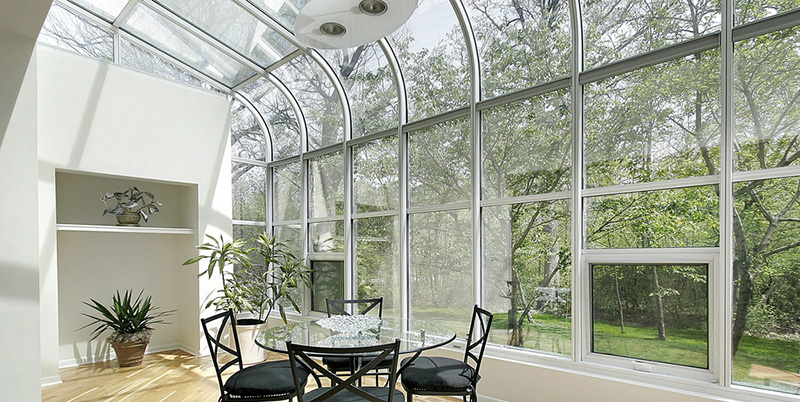
What You Need to Know About Custom Sunrooms and Converting Your Patio
Are you looking to increase the square footage of your house without committing to a full-on expansion and home remodeling project? Are you also hoping for an addition that’s more comfortable, and contained than a simple open-air porch?
For those who want to add a little extra living space but don’t want to commit to a major renovation project, a sunroom is a happy compromise for many households in getting the best of both possibilities.
But what, exactly, is a sunroom? How does it differ from a patio? And how does one go about getting one? We’re taking a look at these questions and setting out everything you need to know about custom sunrooms and converting your patio.
What is a sunroom?
A sunroom is designed to give you access to a more open, outdoor space to relax in, while still providing a buffer against the elements such as heat, cold, rain, and bugs… all the stuff that we don’t want to deal with while enjoying nature. Think of it as a cross between a more heavy-duty porch and a more lightweight interior room — an even balance between indoor and outdoor living.
Sunrooms are enclosed, with roofing and walls that are made up of large glass windows with screened openings that may or may not be opened to emphasize natural light and an outside view. They’re all about openness and visibility and made of products like aluminum, structural vinyl, and insulated glass.
How do types of sunrooms differ?
Sunrooms come in all shapes, sizes, and designs, though one of the most significant distinctions is between three-season and four-season (also known as year-round) models. Here’s the difference:
-
Three-season Sunrooms
Three-season rooms are designed to be used during the spring, summer, and fall, typically using less-expensive and lightweight materials to provide shade from direct sunlight and some cooling during hotter days. They usually aren’t insulated and rely mostly on fans to circulate air during warmer months. They also aren’t connected to central heating, so temporary heaters are necessary if you want to use a three-season sunroom during colder times of the year. Furthermore, three-season sunrooms are kept separate from the rest of the house with an exterior door. They’re also more visually distinctive, with a thinner roof and set of walls that differ from the remainder of your property.
-
Four-season Sunrooms
Four-season rooms are meant to be used throughout the entire year, and are therefore pricier and take longer to complete. They’re also made of sturdier materials to promote better thermal resistance and insulation. They often use double-paned glass and are attached to your primary HVAC system, with built-in air conditioning and/or heating for the changing seasons, and are open to the rest of the home. As a result, they also require complete roofing and siding to better match your house visually and structurally. They’re essentially a lighter variant of a complete addition.
Does a sunroom have to be built from scratch?
A sunroom is often the ideal remodeling path for homeowners because it’s more affordable than a full expansion. Part of this is because sunrooms require fewer (and cheaper) building materials. Another part is the fact that sunrooms don’t always have to be made from scratch. Converting an existing porch or patio is just as feasible an option, though this is usually more applicable to three-season sunrooms.
Of course, doing so isn’t as simple as buying a few windows. Even if it’s not a full-fledged part of your home, an as-is porch needs some major upgrades to be sturdy enough for walls and year-around, or nearly year-around living. You’ll need sill plates, framing, sheeting, insulation, trim, possible electrical/plumbing/HVAC work, and, of course, the installation of windows and doors.
And don’t forget the less obvious details that have to be seen to before you start building. You may need to apply for one or more permits, get your foundation inspected, and decide what to do with your floors should they slope.
An upgrade you can afford
Getting a sunroom is, like any renovation, a big project to tackle, but it’s certainly a more manageable (and cost-effective) one than others designed to give you more space. Adding one can increase your property value – up to a 72% return on resale, which is always valuable. More importantly, a sunroom gives you and your family more space to stretch out and enjoy the comforts of home. Use it as an office, a gym, a dining area, a guest bedroom, a TV room, or whatever else you may need, all while enjoying splendid views and natural light.
Give Alcoe a call at 806-788-0122 or stop by our storefront to start planning and budgeting something ideal for your home and needs today!
Categorised in: Sun rooms
